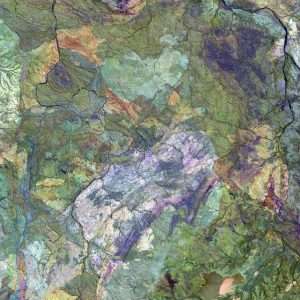Drawing is an essential skill for creating digital art. A drawing tablet is a good investment, but they are not cheap. I am sure many of us don’t know where to start with drawing, so this blog will help you get started drawing.
I have been drawing for as long as I can remember and would like to share some of my knowledge with you. I will also be showing you some of the tools that I use to create my drawings.
I hope you enjoy this blog and find it informative.
Are you looking to get started with drawing? Don’t just pick up a pencil and start drawing. You need to learn the basics of how to draw before you start drawing. The following will explain what you need to know about drawing before you start your next project.
TIP: If you want to create digital art for beginners, try using a graphics tablet. It will make your job easier.
The Basics of Drawing!
Every artist has their own way of starting a new piece, but there are some basic steps that most artists follow when getting started with drawing.
Drawing is not as easy as it seems and knowing the basics will help you avoid making common mistakes that can be hard or impossible to correct once they’ve been made.
The first thing you should do is gather your supplies and set yourself up somewhere comfortable where you can work on your project. You might even want to try out different materials or techniques until you find something that works best for you.
The supplies that most artists use include paper, pencils (for sketching), pen or marker (for inking), brushes (for painting), erasers, and an assortment of art mediums like paint, watercolors, and ink. There are many different types of paper available including illustration
A lot of people want to draw and want to learn how to draw better. There are many ways to go about this. It’s just a matter of finding the right one for you.
Drawing is like everything else: it takes time, dedication and practice. Drawing can be fun and rewarding, but only if you put in the time and effort to get better at it.
The first step is getting the right tools for your drawing style. You will need a pencil or two (H,B), a sketch pad, some erasers and a pencil sharpener. After picking out these necessities, there are a few other things you can invest in that will help improve your drawing skills such as watercolors, colored pencils and markers.
It is possible to create digital art with a drawing tablet, some drawing programs, and a little bit of creativity. The best drawing tablet for beginners is the Wacom Bamboo Create Pen and Touch. This device does not come with any software or an operating system, so you will need to get a computer that can run Windows or Mac OS before you can start using it.
The Bamboo Create pen tablet has 512 levels of pressure sensitivity and comes equipped with a standard USB interface so that it can be plugged into any computer without the use of an external power supply. The pen itself includes two programmable buttons on the side and an eraser-like tip on the other side that is useful for erasing mistakes when you are sketching or retouching photos.
This is the best drawing tablet for beginners because it is very easy to use and is comparatively cheap in comparison to similar products on the market. It also comes with several free downloadable software packages including Corel Painter Essentials 4, Autodesk Sketchbook Express 6, Art Rage 3 Studio Pro and many more.
The Wacom Bamboo Create pen tablet is one of the most affordable tablets that allows you to easily create drawings and sketches from your computer, which makes this one of the best tablets
If you are interested in drawing and would like to learn how to draw well there are some great art instruction books available. In addition to these books, there are also online art instructions that can help you to improve your drawing skills. You can find many of these online instructions at various websites on the Internet.
Tutorials are very helpful when you first start drawing. They allow you to get a better understanding of the process involved. You will also have a much better idea of what it is that you need in order to get started.
There are many different types of tutorials available online and offline. One type is the video tutorial which you can use to learn how to draw with step-by-step methods. Another type is the written tutorial which is just as helpful for beginners as it is for more advanced artists.
An excellent place to find free tutorials is YouTube.com where there are many different types of art tutorials including those for beginners. These tutorials come from professional artists who offer their advice on techniques and materials used in drawing, painting, sculpting and more. Some of these professionals include children’s book illustrators, comic book artists and graphic novelists who give free tips on their techniques used in creating their own works of art.
In addition to these online
Before you even think about drawing, there are several things you should know.
The first thing is that you need to have a reference of some kind. Without one, you run the risk of drawing something that looks nothing like it should, and then, when trying to find out what you drew wrong, having no idea where to start. After all, how do you figure out what went wrong if you don’t know what it’s supposed to be?**
The second thing is that once you draw something and decide that it’s not quite right (or maybe just the way you envisioned it), there is no eraser. So please don’t be discouraged if your first drawing isn’t exactly what you wanted – because a lot of people’s aren’t. The best way to get better at drawing is to practice, so just keep on going!**
If your desire for more art can not be controlled by this blog alone, check out our list of artist blogs in the sidebar!
I will try to explain the method I follow.
First of all, I am not an expert in drawing, but I have been drawing for many years and have also drawn a lot of people… so something must be working for me.
I think it is important to start with the basics: this means that we need to understand what are the essential elements in drawing and how they interact together. Then we can focus on improving ourselves on each element separately, until our drawings look natural instead of too static or too unrealistic.
I’ll show you a few examples to illustrate each point:


